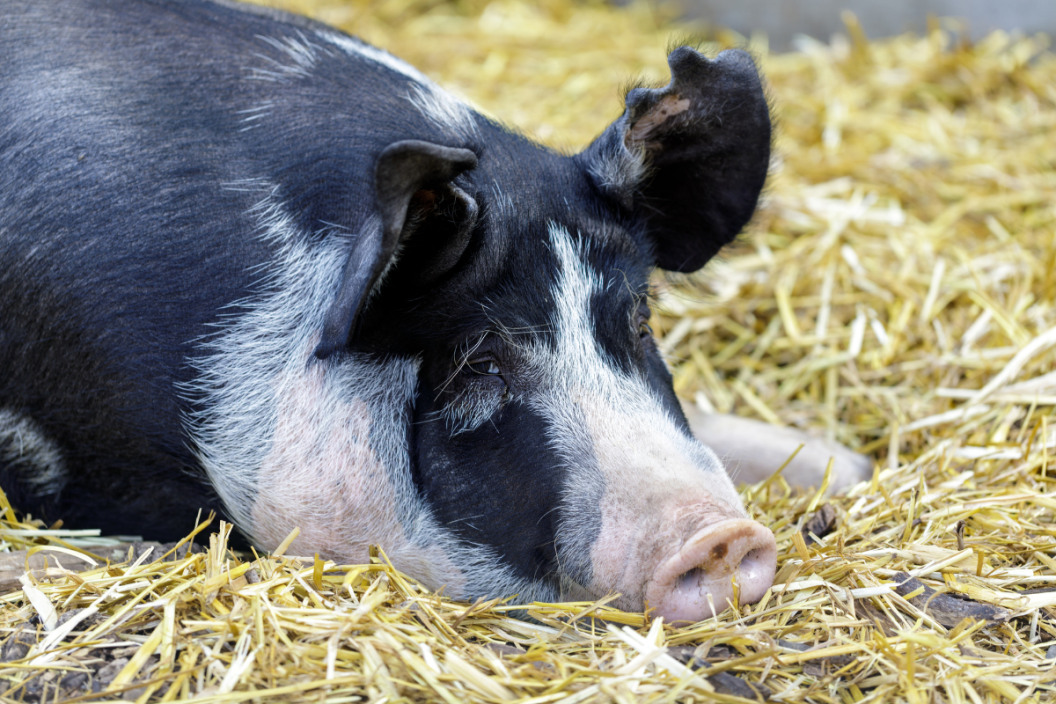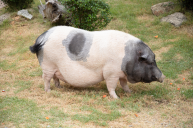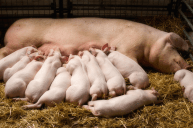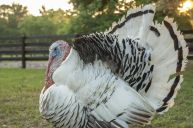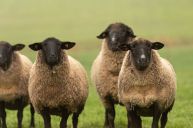Berkshire pigs are one of the oldest breeds of pigs ever recorded!
Berkshire pigs are one of the oldest breeds of pigs ever recorded. They are described as black pigs with six white markings, four white socks, a white splash on the snout, and a white tip to the tail. Do these pigs make good mothers? Would they be a good addition to your breeding stock, homestead, or backyard farm?
Berkshire Pig Origins
The Berkshire pig is believed to be from Reading, the seat of Berkshire county in the United Kingdom. It is both one of the oldest breeds of pigs and the first breed in England to record pedigrees in herd books. The Berkshire was designated as vulnerable in 2008, with less than 300 Berkshire sows estimated to exist at the time. The breed, however, experienced a resurgence in popularity and numbers as a result of a Japanese marketing "wagyu for pork" campaign. This connection to Kobe beef encouraged pig farming to make room in its meat production lines for this special type of pig. The Rare Breeds Survival Trust at Aldenham Country Park in Hertfordshire and the South of England Rare Breeds Centre in Kent also keep herds of the breed.
The American Berkshire Association, founded in 1875, grants pedigrees only to purebred pigs directly imported from existing English herds or to those traced directly back to such imported animals. The organization was the first to create a Swine Registry, and the first hog registered was "Ace of Spades," a royal family boar bred by Queen Victoria herself. After making its mark on the Windsor Castle, the Berkshire was first introduced to Japan in the 1860s and has grown in popularity since then; In 2007 there were over 330,000 recorded on pasture. The Japanese Kagoshima Berkshire, which is thought to be descended from two British Berkshire pigs introduced to Japan in the 1930s, is classified as a distinct breed. The meat from these pigs is often marketed as Kurobuta pork.
Characteristics
Before the eighteenth century, the Berkshire pig was a large tawny pig with lop ears and darker spots. It was significantly changed in the late eighteenth and early nineteenth centuries by cross-breeding with small black pigs imported from Asia. In the modern Berkshire breed, adult Berkshire hogs weigh about 600 lbs, and Berkshire sows about 500 lb. They are black with six white markings, four white socks, a white splash on the snout, and a white tip to the tail.
Berkshire sows are also excellent mothers. They typically have a slightly more extended gestation period than other pigs, such as Hampshire pigs, and give birth to marginally smaller litters (between 8-10 piglets). The sows are also good at nursing, and their piglets grow quickly and healthily without major issues. They make an excellent choice for small farms or homesteads interested in raising pigs.
Berkshire Pork and Other Uses
Berkshire pigs are known for their high meat quality, as with other heritage breeds of pigs. Berkshire pork is pink-hued with marbling. It is valued for its juiciness, taste, and tenderness. It comes in many different cuts, such as loin chops, shoulder and leg roasts, tenderloin, ribs, and bacon. Because of its high-fat content, it is ideal for slow cooking and high-temperature cooking. Berkshire pigs are often bred in low-stress conditions that keep them calm. As the animal relaxes, blood runs more evenly through its system. Berkshire pigs are also slaughtered in ways that reduce tension and improve meat flavor.
Share your experiences raising pigs on the Wide Open Pets Facebook page!
